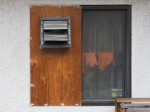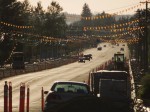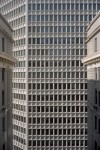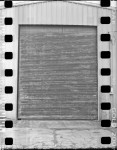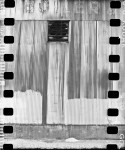Jul
31
2013

As a child with a hammer sees everything as a potential nail a Wallace with a telephoto lens sees everything…. I think you get where I’m going with this. My first adapter unfortunately failed after only a couple of hours of use but Pentax replaced it under warranty and my second one has been working without any problems. I’ve been using it with several different lenses but the one with the biggest impact has to be the DFA100 2.8 WR macro. On the Q with its 5.5x crop factor that makes it a whopping 550mm f2.8 equivelent macro lens. It’s certainly not a combination that you just pick up and start snapping away with. I’m still determining what works and what doesn’t, primarily it’s the fact that the Q isn’t a great high ISO performer and it’s quite difficult to focus a 550mm lens manually. All the shots so far have been hand-held and I’ve found that there is a real tug of war between setting a higher ISO and having a high enough shutter speed. Now that I’ve determined that there are limits I need to quantify them with a bit more rigor.
The other two lenses that I’ve been using are a 28mm f2.0 Vivitar and various Pentax 50mm lenses. These two give effective focal lengths of 154mm and 275mm respectively.
3 comments | tags: Digital, Pentax, telephoto | posted in Photography
Jul
29
2013

I was going for a still life painting look but I wasn’t necessarily going for a blurry camera shake effect.
no comments | posted in Photography, Processing
Jul
27
2013


I’m often looking to expand my photography beyond the bounds of a single image either through multiple exposures or image pairs. Now I’ve found another tool the Fuji Rensha Cardia with its sixteen individual lenses. If the dimpled shutter release button isn’t enough to indicate that it was originally intended to record your golf swing then the icon of the guy swinging a golf club should probably drain the putt. The lenses can be released at two rapid speeds in one sequence or one at a time with the second button on the left. The sixteen little sub frames are recorded across two standard 35mm frames. Therefore the first frame contains the image from 1 to 4 on the top and 9 to 12 on the bottom.

I created animations from the individual images like from the image above
And experimented with the individual shutter release in images like the one bellow. There are many more things that can be done within the 16 frames

Yes you could shoot individual pictures with some form of digital camera or phone and then stitch them together but this is at least sixteen times more fun than doing that.
I put together a few animations that can be seen on Youtube
5 comments | tags: camera, film, Fuji | posted in Cameras, Photography, Processing
Jul
25
2013
Today I get to deliver one of my photographic prints to the Kariton Gallery for the 2nd Fraser Valley Regional Biennale I’m especially looking forward to seeing all the different work from the other artists that have been selected.
The work of mine is titled “Pipeline Crossing”. The piece is part of my exploration of our relationship with fossil fuels and their impact, as the pipeline seems to precariously cross the sky. The scale is hinted at with the human sized ladders.

If you would like to see the full picture (without my goofy visage) as well as all the other art please visit the Kariton Gallery during the Biennale and if you can at the opening reception on Sunday July 28th 1-4pm
On the technical side the physical print is 40cm x 58cm and is a digital archival print from a scan of 35mm Kodak Ektar 100 film. It was printed skillfully at Abbotsford Lens and Shutter and professionally framed at Abbotsford Art Gallery where they do a fantastic job.
I was also a participant in the 1st Fraser Valley Biennale at the Reach Gallery with one of my oil paintings “Made in Occupied Japan”

2 comments | tags: art, gallery, Photography | posted in Art observations, Photography
Jul
23
2013

#Instapoem 4
There once was a man called Duncan
Who was aboard a ship quite drunken
When he fell off the bow
He exclaimed very loud
I believe my Nikon has sunken
1 comment
Jul
21
2013

I have been very impressed with Kodak Ektar and its fine grain and how well it scans but have shied away from 400 ISO films until necessity has forced my hand. I’ve found it increasingly hard to find inexpensive 200 ISO film so have migrated to using cheap 400 film for my everyday shooting. The results from this change have been encouraging enough for me to consider trying some better more expensive 400 films like Kodak Portra. Many people may not realize just how much of the movies are still shot on film, for example at the time I write this no Movie has won a best picture Oscar that was not shot on film. The point is that despite the steep drop off of still photography on film, development and use continued on the movie side unabated. In 2010 they released this formulation of Kodak Portra 400 which used the technological advancements that had been made there. The result as they claim is the worlds finest grained 400 ISO film and that it scans very well. I will take their word for it as it certainly scans well and is fine-grained I’m just not really on a quest to prove that.

I scanned this Negative at 4800 DPI on my Epson V700 scanner producing an image 6800×4500 (32Mpixels) but that is stretching things into the area of diminishing returns both for the film and the scanner. At 3200 DPI the image has as much detail so there is little need to create such large files. Almost all the scanned frames produced from this roll of film have details in both the highlights and shadows. This produces somewhat flat files without a lot of contrast but for my digital work flow this is fine in fact it is preferable, these files allow great latitude for manipulating them digitally.
no comments | tags: film, Photography | posted in Photography, Processing
Jul
19
2013
Convert Whalley into a city center, that’s the plan anyway. The City of Surrey (in British Columbia) wants to convert what is a rundown neighbourhood of old houses and businesses that the owners seemed to have stopped maintaining decades ago into a new urban center. They are so committed to this its hard to believe they wont. The City has even built its new city hall right in the neighbourhood and with the skytrain stops it seems possible. Not everyone will be happy about this but much of the good aspects of the area have long ago gone and renewal may be what’s needed.

no comments | posted in Art observations
Jul
16
2013

My initial try with this camera was marred by the horrible out of date Polaroid brand film I used with it. If it hadn’t otherwise been such a good performing camera I would have just left it at that but it seemed to deserve another roll.
And how do I feel now? Well it’s a good camera with great ergonomics as I outlined in my first post Ricoh RZ3000 , but as for results it doesn’t produce anything that necessarily stands out. I could go back to bad film, that stands out but otherwise it doesn’t really give me a look that says this is why I still shoot film.
When I choose to use film one of the reasons is the overall experience of the camera, such as using a Twin Lens or a rangefinder but with the RZ3000 it’s almost too much like just using a digital camera. So as good as it is it will go back into a small box with similar cameras until I forget what I just wrote and take it out again.
2 comments | tags: camera, film, Photography, Ricoh | posted in Cameras, Photography
Jul
13
2013

Kodak gold, old Kodak Gold, old Expired Kodak Gold is the most frustrating film to scan while showing the sprockets. It not only wants to coil into a tight little roll it wants to curl into a ball from the sides. Arrrrggg (That is the sound Of frustration) The curling was so bad that I couldn’t even scan it as colour because of all the shifts from the orange C41 mask, or hold it flat. That is why despite the film being labeled Gold-200 it’s converted to Black and White.

Switching to the Yashica 44’s ground glass from an SLR viewfinder or an LCD screen takes some adjustment as everything is mirrored. So to move an object on the glass to the left the camera needs to be turned to the right. I tend to tilt the horizon for some reason so the red lines are very helpful. Another added aid is the small magnifier (not shown here) that can be popped out to check focus on the glass. Modifying this camera (Yashica 44 35mm conversion) is a great way of making it usable again despite the fact that it is a film orphan. I will never use Kodak Gold in it again though.
no comments | tags: camera, film, Photography | posted in Cameras, Photography, Processing
Jul
11
2013

There once was a girl online
Whose pictures where quite fine
Until she adopted a cat
And posted pictures of that
Now her requests to follow are declined
3 comments | tags: poem, poetry | posted in Art observations













